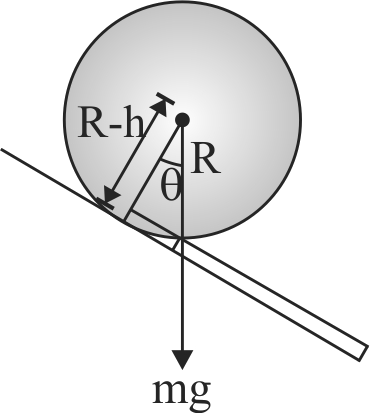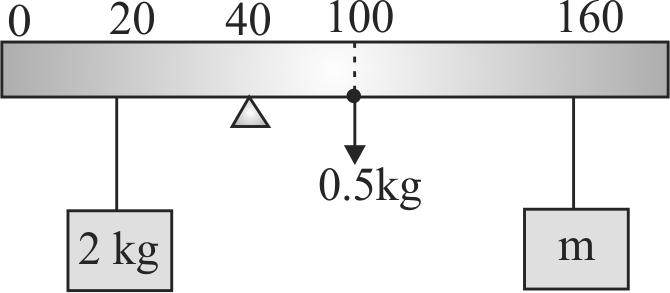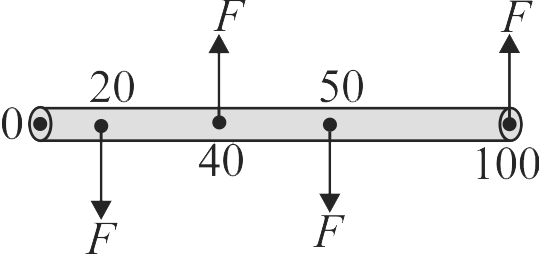366141
A uniform rod of length \(200\;cm\) and mass \(500\;g\) is balanced on a wedge placed at \(40\;cm\) mark. A mass of \(2\;kg\) is suspended from the rod at \(20\,cm\) and another unknown mass \('m'\) is suspended from the rod at \(160\;cm\) mark as shown in the figure. Find the value of \('m'\) such that the rod is in equilibrium. \(\left( {g = 10\;m/{s^2}} \right)\)
366141
A uniform rod of length \(200\;cm\) and mass \(500\;g\) is balanced on a wedge placed at \(40\;cm\) mark. A mass of \(2\;kg\) is suspended from the rod at \(20\,cm\) and another unknown mass \('m'\) is suspended from the rod at \(160\;cm\) mark as shown in the figure. Find the value of \('m'\) such that the rod is in equilibrium. \(\left( {g = 10\;m/{s^2}} \right)\)
366141
A uniform rod of length \(200\;cm\) and mass \(500\;g\) is balanced on a wedge placed at \(40\;cm\) mark. A mass of \(2\;kg\) is suspended from the rod at \(20\,cm\) and another unknown mass \('m'\) is suspended from the rod at \(160\;cm\) mark as shown in the figure. Find the value of \('m'\) such that the rod is in equilibrium. \(\left( {g = 10\;m/{s^2}} \right)\)
366141
A uniform rod of length \(200\;cm\) and mass \(500\;g\) is balanced on a wedge placed at \(40\;cm\) mark. A mass of \(2\;kg\) is suspended from the rod at \(20\,cm\) and another unknown mass \('m'\) is suspended from the rod at \(160\;cm\) mark as shown in the figure. Find the value of \('m'\) such that the rod is in equilibrium. \(\left( {g = 10\;m/{s^2}} \right)\)




